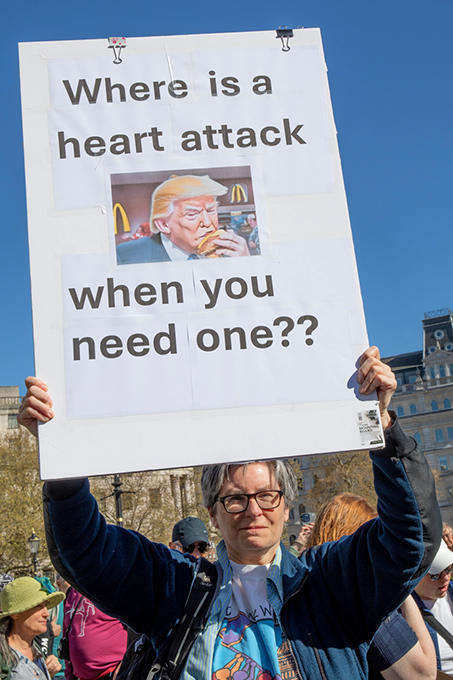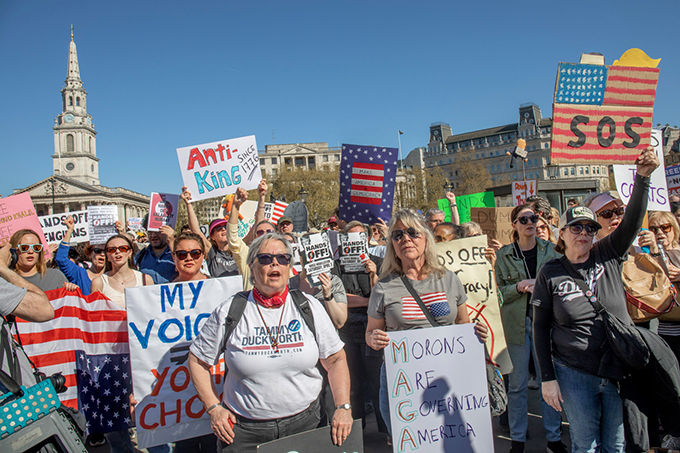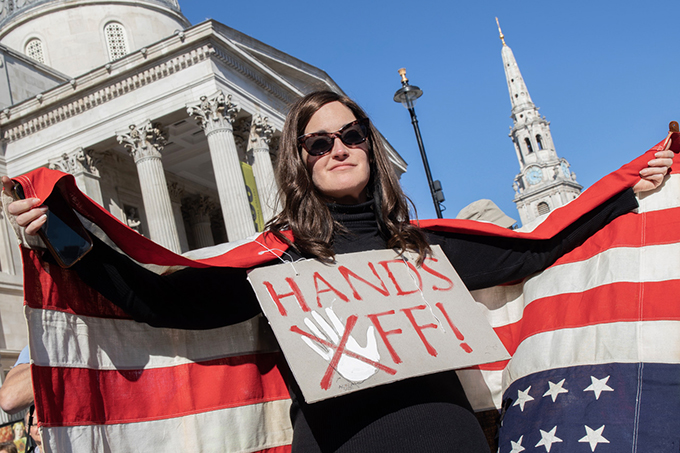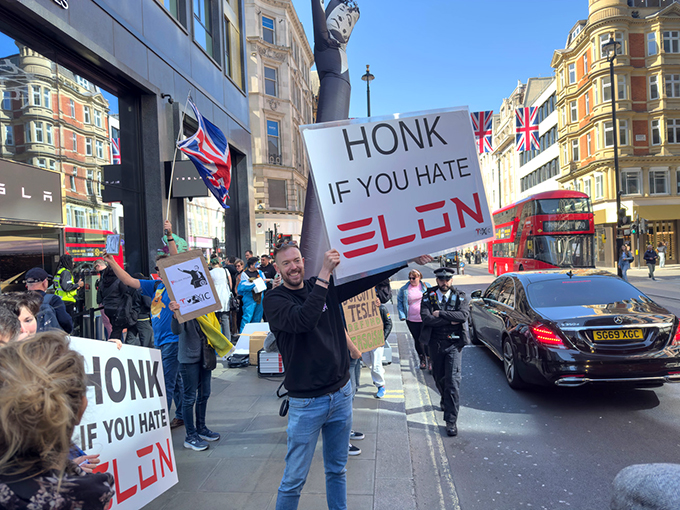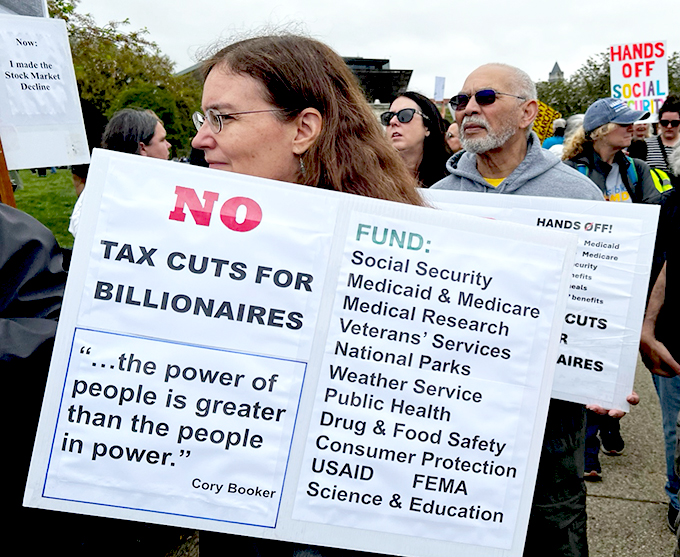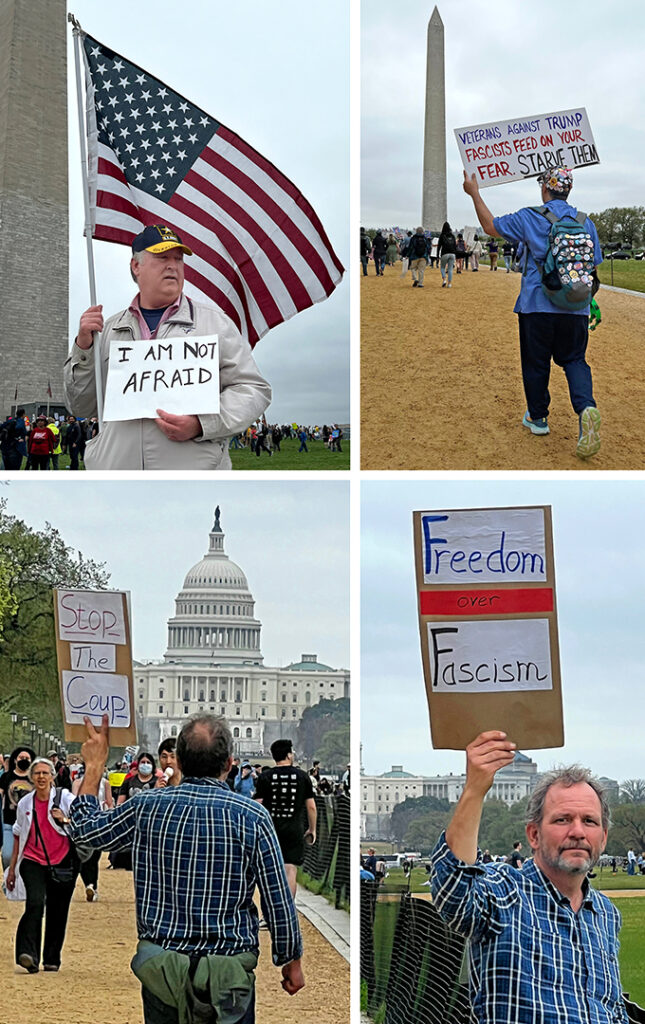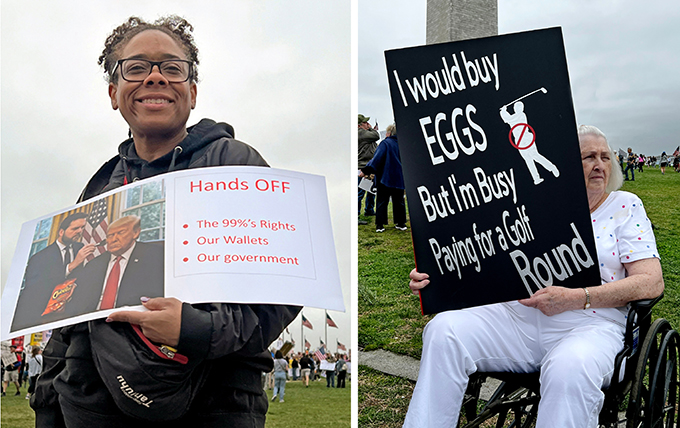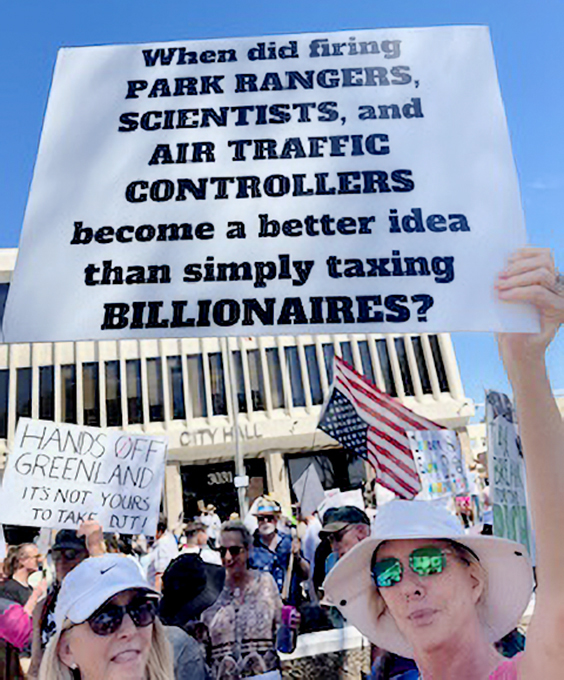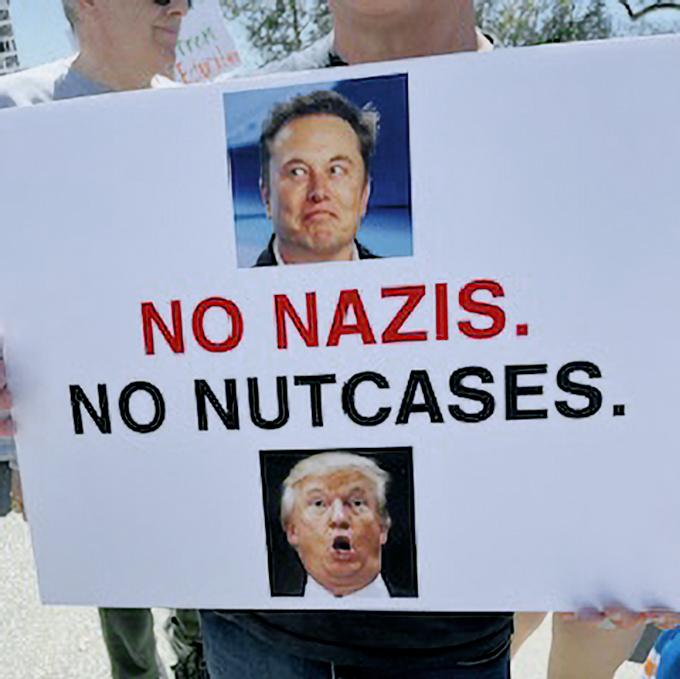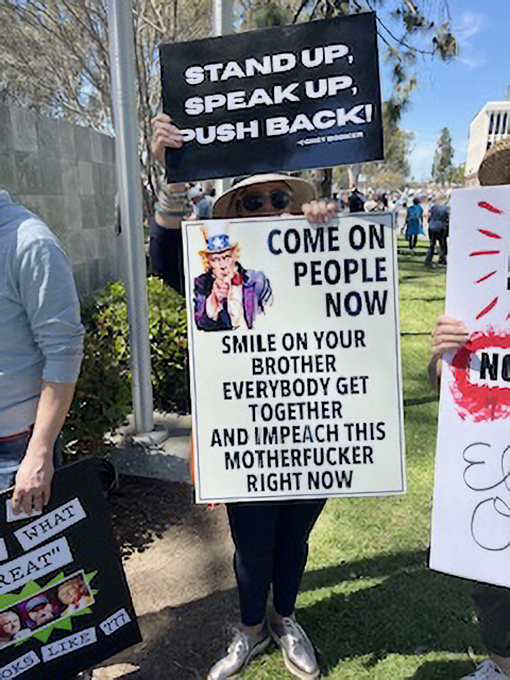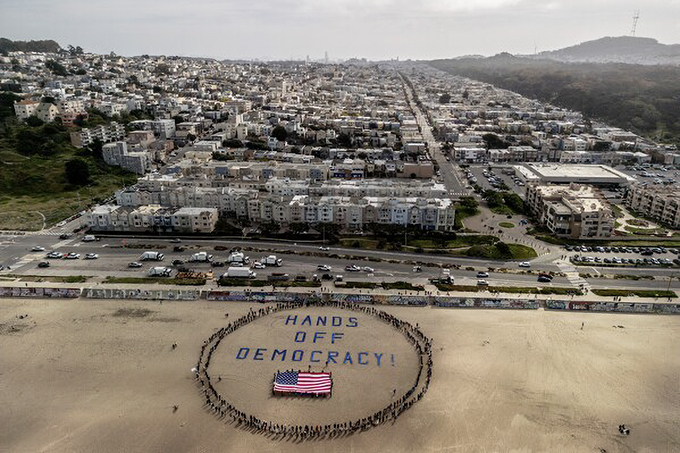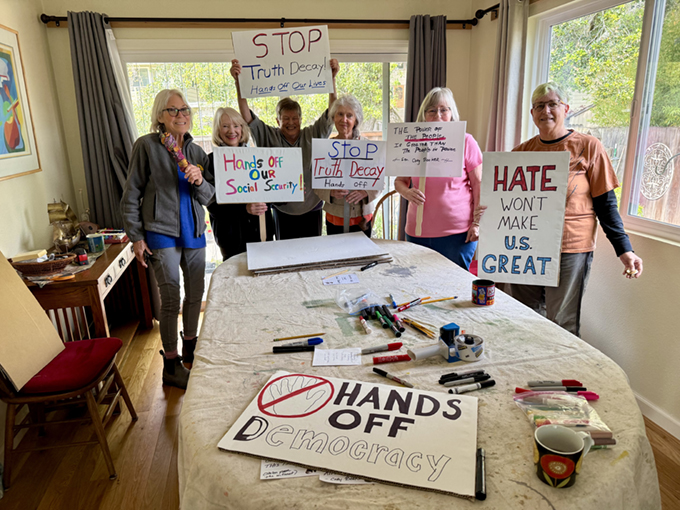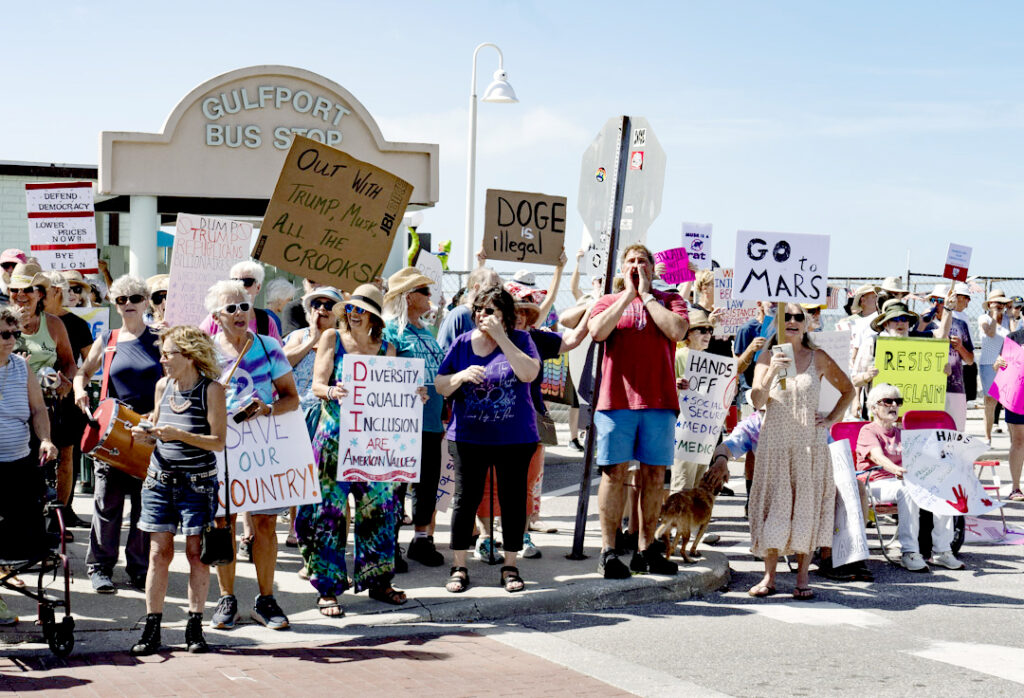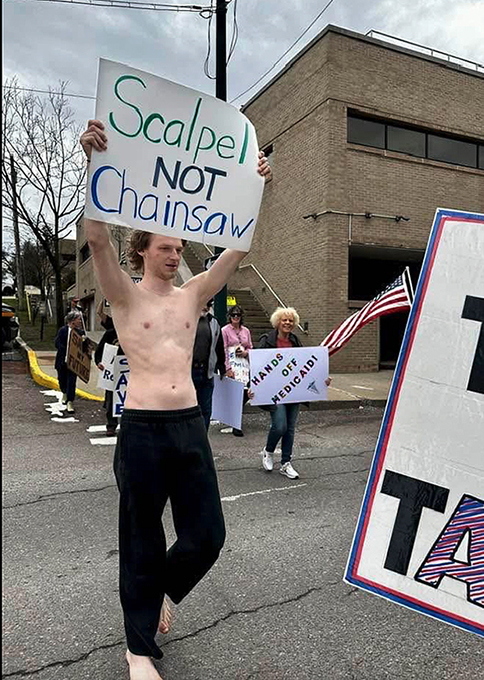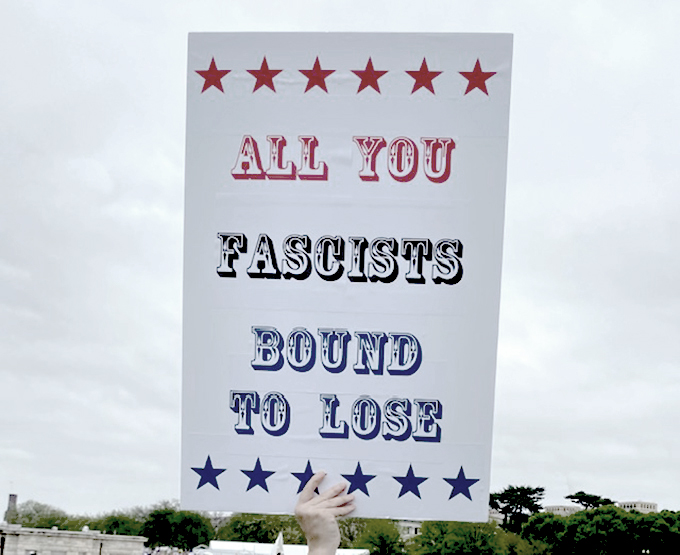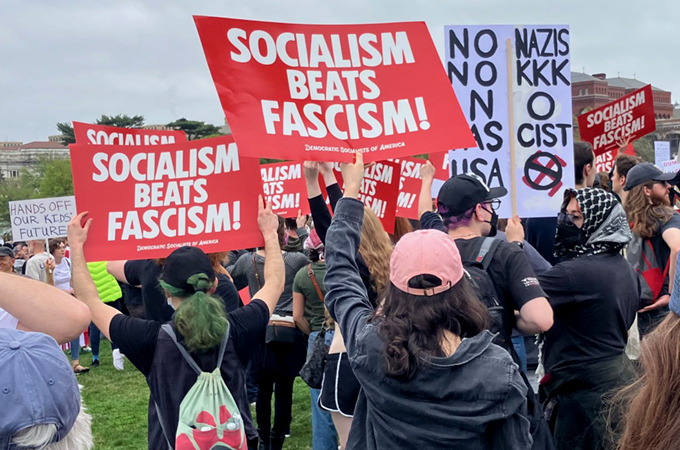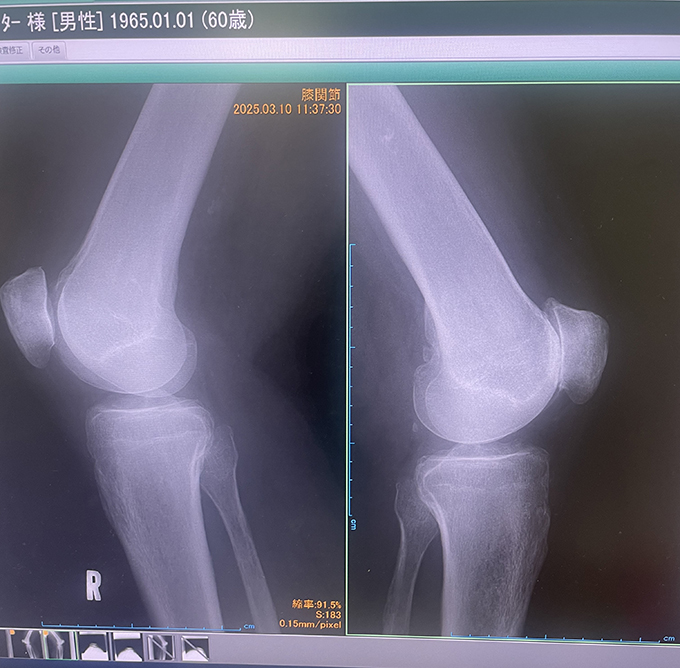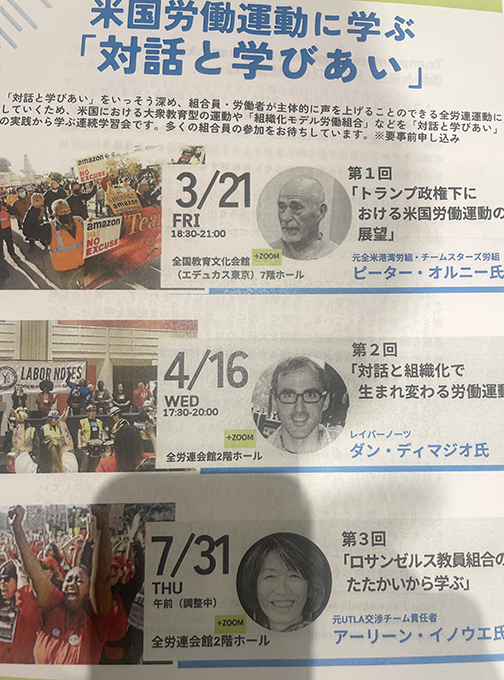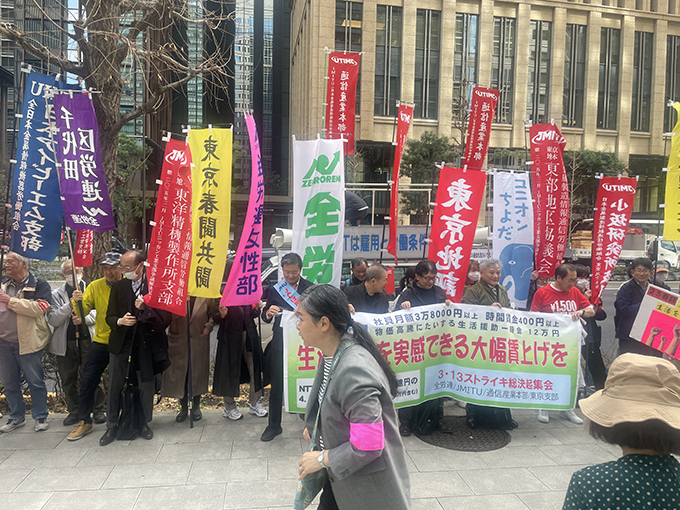In W. Va. and Nebraska: Can Two Working Class Candidates Crash aMulti-Millionaire’s Club in Washington, DC?
By Steve Early
Both major parties on Capitol Hill like to boast about how much more “representative” their Congressional delegations have become in recent years. But that’s only in the most discussed categories of diversity—such as race, age, gender, ethnicity, or sexual orientation. Working class Americans rarely end up in the halls of Congress. Fewer than two percent of Congress members had working class jobs at the time they were elected.
Two working class candidates hope to improve those numbers next year, by winning U.S. Senate seats in Nebraska and West Virginia, states currently represented by anti-labor politicians, but which were once bastions of a more populist, pro-worker politics.
Osborn image
In Nebraska, Dan Osborn is challenging two-term Republican Deb Fischer. Osborn is a steamfitter from Omaha who helped lead a successful strike by 1,500 Kellogg’s workers. They shut down plants in four states for 11 weeks in 2021.
Zach Image
In West Virginia, Zach Shrewsbury is also running for Senate. He’s a military veteran (as is Osborn) and a community organizer, and the grandson of a coal miner. Shrewsbury hopes to replace multi-millionaire Joe Manchin and prevent governor Jim Justice, a billionaire coal baron, from claiming the seat that the corporate Democrat is vacating.
Populist Voices
In their respective campaign launches this fall, both candidates sounded themes once familiar to voters in their home states in the heyday of progressive populism, but not heard much lately.
While picketing with General Motors workers in Martinsburg in October, Shrewsbury explained that he’s “running to win and show that working class people can run for office, even high office. We can’t be ruled by the wealthy elite who don’t understand everyday American life.”
At a campaign kick-off event in late September, Osborn denounced “the monopolistic corporations… that actually run this country” and pledged to “bring together workers, farmers, ranchers and small business owners across Nebraska around bread-and-butter issues that appeal across party lines.”
Unlike Shrewsbury, who plans to compete next year’s Democratic primary, Osborn is currently collecting the 4,000 signatures necessary to get on the November 2024 ballot as an independent. He hopes to avoid unhelpful association with the national Democratic Party in a state which chose Donald Trump over Joe Biden by 19 points in 2020 (and Trump over Hillary Clinton by an even larger margin four years earlier).
Second Osborn Photo
Osborn admirers in Nebraska unions, and even the state Democratic Party, believe his non-partisan stance may be helpful. According to Jeff Cooley, a railroad union official who leads the Midwest Nebraska Central Labor Council, Osborn’s focus on issues like rail safety and the PRO Act, paid leave time, minimum wage increases and misclassification of workers as independent contractors “offers hope to all workers in Nebraska regardless of political party.” Osborn’s platform also highlights the need to curb corporate misbehavior ranging from routine consumer rip-offs to Big Pharma price gouging and monopolistic practices in the meat-packing industry which favor big agriculture over small family farmers and ranchers.
A Troubled Brand
Jane Kleeb, a past Bernie Sanders delegate who chairs the Nebraska Democratic Party and serves as an Our Revolution board member, told the local media “it would be very interesting for Democrats, Libertarians, and Independents to all come together with the one goal of breaking up the one-party rule at the top of the tickets in our state.” She acknowledged to Labor Notes that, at the moment, “the brand of the Democrats is not the best when it comes to working class and communities of color voters.” Meanwhile, in rural communities like her own, “people think Democrats are wimpy, just want to tax us, and take away our guns.”
Neither Osborn nor Shrewsbury look or sound very wimpy. Before going to work for Kellogg’s as an industrial mechanic and becoming president of Bakery, Confectionary, Tobacco Workers and Grain Millers Local 50G, Osborn served in the Navy and two state national guard units. Shrewsbury was in the Marine Corps for five years. After his discharge, he joined Common Defense to rally fellow veterans against what that group calls “Trump’s corrupt agenda of hate” and “the entrenched power of greedy billionaires who have rigged our economy.”
Long thin image
Shrewsbury has been an organizer for Citizen Action and the New Jobs Coalition, where he met retired AFL-CIO organizing director Steward Acuff, now a resident of West Virginia. Acuff hopes to enlist national union backing for Shrewsbury’s campaign. The two of them bonded while canvassing to build grassroots support for federally-funded green jobs, environmental clean-ups, and infrastructure projects employing union labor. Acuff believes that Shrewsbury is uniquely equipped to challenge the “corporate colonialism that is still robbing a people and their state of much-needed resources.”
Shrewsbury wants to use his campaign “to help revitalize labor here and everywhere, like Bernie did.” Like Sanders, who won West Virginia’s Democratic presidential primary in 2016, Shrewsbury isn’t afraid of being red-baited either. “If caring about working-class people, caring about people having bodily autonomy, water rights, workers’ rights, makes you a socialist, then call me whatever you want. Doesn’t bother me,” he told The Guardian recently.
Fundraising Disadvantage
Osborn has raised more than $100,000 in small donations so far. Next November, Nebraska voters will also consider a ballot measure backed the Nebraska State Education Association. It would repeal the Republican-dominated state legislature’s authorization of a tax scheme that threatens financing of public education and aids private schools instead.
Osborn favors repeal, further illustrating what Kleeb calls “a real contrast between Dan and Deb Fischer,”who has built a $2.7 million re-election campaign war-chest. According to Fischer’s website, her top donors include “fellow Senate Republicans, the American Israeli PAC, the construction industry and defense contractors.”
Osborn believes that his Senate race could be “the most viable independent campaign in America” next year, particularly if Nebraska’s Democratic primary produces no serious competition for Fischer’s seat. Meanwhile, he is spending 40 hours a week doing boiler maintenance and repair work at Boys Town in Omaha, as a member of Steamfitters and Plumbers Local 464.
Osborn hopes to take more time off, from his day job soon to campaign around the state, with backers like Nebraska Railroaders for Public Safety. This advocacy group just conducted a favorable poll and then endorsed him.
Their survey of 1,048 likely voters revealed considerable discontent with Fischer, who promised to serve only two terms but is now seeking a third. Despite Osborn’s lack of name recognition, he had a slight lead over Fischer, which grew larger when survey participants were informed about the biographies and positions of both candidates.
The Nebraska Railroaders are taking that as an encouraging sign that their state still has an independent streak that could help “elect a next-generation representative of the working class instead of continuing to send out-of-touch millionaires back to Washington to fail us.”
…
Editor’s note: Shewbury has put out a statement regarding the war being waged in Gaza between Hamas and Israel – it is included below.
Dear Steve,
Hear me out. This email will be a bit long, but I need to share this with you.
I did not grow up in an environment where conversations about Israel and Palestine were commonplace. We were a working-class family in a small community, and foreign policy issues were not frequently discussed. We were neither Jews nor Arabs. My family has been in West Virginia for centuries, and our world was insulated. I didn’t have access to the kind of liberal arts education where history is examined from different perspectives. In the Marines, my training did not include a deep dive into the events that led to Nakba in 1948, which, by the way, means “the catastrophe” in Arabic.
I am from the same cloth as most Americans; I am a working West Virginian.
As a future U.S. Senator, I’m dedicated to deepening my knowledge and understanding of current events’ historical and legal context because the responsibility to and the influence this country has over millions of people in faraway lands is enormous. I don’t take this power lightly.
Our media industry often sensationalizes terms like war, self-defense, and human shields to mold public opinion toward the monied interests of their advertisers and influential stakeholders and the system that allows them to rake in incredible profit at the expense of truth and balanced reporting. As I broaden my context, I’m learning what these terms mean under the International Human Rights Law that we as a country claim to support and yet so rarely honor.
- The term “war” is used intentionally to create the impression that what is going on between Israel and Palestinians is a conflict between two autonomous states. That cannot be further from the truth, as Israel is the occupier, and Hamas is the governing body of the occupied territory but not a sovereign government.
- Israel has obligations under international law to provide services and ensure the safety of its occupied population. On October 7th, when Hamas attacked, they had the right to use police powers to apprehend the criminals and prosecute them but not to use their massive military might against an essentially defenseless people. We cannot use the “right to defense” language describing Israel’s revenge that has so far killed approximately 18,000 Palestinians, two-thirds of whom are women and children.
- In the context of international law, using human shields means actually putting a civilian in front of a military vehicle or combatants while advancing on the enemy. It doesn’t mean having combatants living or even operating in the areas civilians occupy. Using human shields is a war crime. Israel uses the human shield argument to justify their illegal, immoral, massive-scale attacks on civilians and civilian infrastructure. Israel wants to drive the Palestinians out of Gaza.
…
Contingency Planning for the ’26 Election: Making It a “Win/Win” for Us
By Mike Miller
What would be the result of “our side”—meaning a center-liberal-progressive-left alliance—winning the ’26 elections? Advocates for deep engagement in the 2026 election tell us we would put a big dent in Trump’s operation. I do not question that conclusion. I hope voting skeptics will agree! This coming election may be our last “free” election in some time; we need to take advantage of the opening it offers.
I write those words while doubting the 2026 election will be an honest one. The forms of election theft are widely discussed, so only get brief mention here:
— Trump and his allies control the state electoral apparatus in a number of key states. While election officials have generally been strong in defending honest elections, there is a strong possibility that won’t be the 2026 case in some states.
— New and vigorously enforced rules for electoral participation (photo ID, spelling of name at vote check-in perfectly matching name on voting clerk’s list, and others).
— Polling place vigilante action at Democratic-friendly precincts to intimidate voters when they show up to cast a ballot.
— Supreme Court appeals will face a majority that is ready, willing and able to provide the support Trump wants. Even cases won in lower Federal courts require enforcement by the Justice Department. We can with some confidence guess the result.
Am I Contradicting Myself?
If the 2026 election is lost without a next step, it will be a dead-end strategy—a defeat of our side that will result in “adventurism” (super militant tactics that isolate our cause rather then broaden its support), on the one hand, and despair accompanied by withdrawal from politics, on the other. We’ve been there before: look at the mid-1960s to mid-1970s.
If the 2026 elections are treated as a tactical part of a larger strategic plan, “defeat” by theft could win the support of centrists and moderates for a next tactical step that they otherwise would reject if they hadn’t experienced the theft. If we wait until the fox has left the den, there won’t be any getting the chicken back. Disarray will follow.
This is called “contingency planning.” If “a” then “b” or if “x” then “y”: if there’s a fair count and we win (option “a”), then celebrate, recognize those who played important roles in carrying the day, learn from what was done right (and wrong) and draw more general lessons from the experience. It can be a teachable moment. If there’s not a continuing basis for a “popular front” then take whatever might be your next step.
On the other hand if we lose because of election theft (option “x”) then a pre-agreed upon next step or series of next steps is undertaken. A shift from electoral participation to nonviolent direct action is made and publicly announced. Centrists and moderates say to their respective constituencies, “direct action is required because the election was stolen. The plan for the next step has been widely approved and already announced publicly.”
The contradiction indicated above is resolved by strategic planning: publicly and widely announcing, “the choice is yours Mr. Trump: have an honest election, and we’ll abide by the outcome; have a dishonest one, and we’ll do everything we can to shut the country down.”
Another Contradiction Resolved
Direct action tactics are typically undertaken by relatively small minorities. The key to their success is obtaining broad support in their immediate constituencies and beyond.
The 1930s industrial union movement engaged in militant direct action, including boycotts and factory occupations. Efforts to defeat them with firing of militants, hiring scabs, private police intimidation, and violence including murder of striking workers failed. Instead, they broadened and deepened the support for the cause.
The Black student-led sit-ins and freedom rides of 1960 and 1961 were replaced by a voter registration and community organizing approach because student leaders recognized they were not achieving participation from the adult Black community. When a process of listening to that community took place, it became apparent that community leaders’ priority was the right to vote because it could open the door to political participation, non-discrimination and economic rights. The shift to voter education/registration/get-out-the-vote created new political voices—Mississippi Freedom Democratic Party and the Lowndes County (AL) Freedom Organization that received community support.
When that support was lost, the “cause” was diminished in its impact. Non-discrimination and voting rights were important, but the economic justice (“full employment”) dimension of the massive 1963 March on Washington was abandoned.
A 2025/2026 agreement to maintain broad support says:
“we” (the further left and more militant part of the alliance) will play by electoral politics rules. But if voting is illegally undermined, “you” (the centrists and moderates) will play by different rules. In each case the rules will be all of ours because we agree upon them now.
The tactical idea here is that what becomes widely expected election fraud by the Trump/MAGA forces will provide the education that moves initially more conservative and cautious people to a more militant program that has already been discussed.
We have to be prepared to shut the country down with a broad base of support (faith, labor, interest, identity, celebrity and other groups). Tactics aimed at “choke points” in the economy (key production, warehousing, transportation, government and service workplaces) would have the support required to prevent the isolation of nonviolent direct action.
…
Hands Off! Post 5
By The Editors
Robert Wallis – London, England
Letter to an American
In response to the photos I sent I was asked by someone in America, what are the Brits* so upset about? Don’t you have your own political “morons” to deal with? And the answer is yes…. On the hard right we have the Reform Party led by Nigel Farage who, with the help of Bojo (Boris Johnson), convinced Brits to vote for Brexit against their own interests, economic and otherwise. Now the small majority that were swayed by Nigel’s lies, and who are often the most negatively impacted, have had serious buyer’s regret. Sound familiar? On the other hand, as blowback from the Brexit debacle and years of austerity under Conservative government, the Labour Party was voted back into power by a large majority. But so far Keir Starmer has refused to take any steps to even partially reintegrate with the EU trading block although he strongly opposed Brexit in opposition. Instead, up until this week, he’d been working hard at massaging Trump’s ego** hoping that Britain’s “special relationship” with the U.S. would help mitigate our lost trade with Europe. That hasn’t worked out so well, unless being slapped with only 10% tariffs is considered a reward for our special status. At the same time Starmer is cutting social spending and foreign aid to increase spending on defense. The cutbacks are not at the level of the U.S. but it will mean harder times for people who were already struggling economically. And, as in the U.S., people are watching the bottom fall out of pension plans as global stock markets cratered in response to the Trump tariffs. Meanwhile Britain’s targets for reaching Net Zero carbon emissions are also being pushed back due to the changed economic reality although the government still admits the climate threat is real and getting worse (unlike Trump). Turning to foreign policy, most of the world watches in horror the ongoing genocide in Gaza enabled, as always, by U.S. unconditional support for Israel. Although Trump has taken it to a whole new level by calling for the complete expulsion of Gaza’s population to redevelop it as a resort for “people of the world”, other than the Gazan’s themselves. It’s music to the Israeli hard-right’s ears. The U.K. is not guilt-free as it has been providing jet parts and intelligence for Israeli bombing raids, not to mention having been at the root of the entire problem when it carved up the former Ottoman Empire with France at the end of the First World War. But that’s a much longer letter.
So yes, there’s lots of stuff to get upset and demonstrate about on both sides of the pond.
*Full disclosure: many of the people at the demo yesterday in Trafalgar Square were actually expats and/or Londoners, like myself, showing up on short notice.
**But we now have Trump’s 2nd state visit to look forward to. It’s a special honor bestowed on him by Britain as the first elected leader in modern times to get the invite twice (hand delivered by Starmer). Keir had hoped it would earn us some extra poodle points. If/when Donald sets foot in Britain again there will be a lot more people from around the country out on our streets.
Earl Dotter – 15th Street on the Mall, Washington D.C.
“I was moved by the range of participants who created homemade signs that spoke to their specific concerns and viewpoint.”
The announcement was simple enough, as my wife, Deborah, and I traveled from our home just outside Washington, DC to attend the April 5th, HANDS OFF Rally, a short ride on the Metro subway stop at the Smithsonian Institute, the museum complex now besieged by the Trump administration.
I am a longtime occupational photojournalist. I brought my iPhone along, as both a rally participant and workplace photographer who began his career in 1968, after the coal mine disaster in Farmington, West Virginia, claimed the lives of 78 miners. In 1969 Richard Nixon signed into law the Mine Safety and Health Act and the Occupation Safety and Health Act (MSHA and OSHA), as well as the EPA a year later.
Now Donald Trump and Elon Musk are eviscerating those same institutions along with many more key Federal Government agencies. At the rally, I rubbed shoulders with our fellow citizens to speak our peace, like my Congressional Representative Jamie Raskin, who said at the rally, attended by over 20,000, “No moral person wants an economy-crashing dictator who knows the price of everything, and the value of nothing.”
Diane Middleton – Torrance, Califonria
As famously stated: “We’re mad as hell and we’re not going to take it !”
Torrance, California saw 10,000 people line the streets and flood the city plaza with signs that captured the outrage felt by Americans protesting the unconstitutional actions of the Mad King.
Torrance is a solid middle class community of white collar, defense, and refinery workers. This was the largest protest ever in this little SoCal community.
America – we are getting there!! No “leaders” speaking for us at this rally. Just folks expressing their most heartfelt fears and disgust with handmade signs!
Resist! Resist! Resist!
…
Hands Off! Post 4
By The Editors
This Is What Democracy Looks Like
Sterling Smith – Fayetteville, Arkansass
This Is What Democracy Looks Like
And I went down to the demonstration
To get my fair share of abuse
Singing, “We’re gonna vent our frustration
If we don’t we’re gonna blow a fifty-amp fuse”
Memories of the Rolling Stones and the protest songs of the 60’s echoed in my mind as I rounded the street corner to approach the Washington County Courthouse in downtown Fayetteville, Arkansas. I was greeted by a cacophony of sounds as over eight hundred people chanted and sang, accompanied by the horns of countless cars on College Avenue honking in support of the demonstration. Men, women, families, students, retirees, working folks, gays, straights, and trans… just people coming together to support a common cause. There was not any abuse that I could see, unless you count the guy in the pickup truck who drove around the block a couple of times to wave at the crowd with his middle finger. But there was a lot of frustration.
On April 5th, 2025, the community of Fayetteville braved wind, rain, and freezing cold to vent their frustration at what is happening to our country. Multiple demonstrations for the day – We the People Veto Project 2025, Hands Off, the 50501 Movement, and the Women’s March – blended into one large demonstration in our beautiful town. A plethora of signs was visible, supporting a variety of causes, from LGTBQ+ rights to Vets Against Fascism… from Vote the Bums Out to Support Our Labor Unions. One might get confused as to what this demonstration was all about, except for one over-arching theme… people are fed up with the dismantling of the federal government to ultimately “line the pockets” of the ultra-rich.
After an hour of protesting, the crowd peacefully marched to the Town Square to hear several speakers. Despite the frustrations of our times, joy and enthusiasm spread through the crowd as people remembered that we are strong when we find unity and common cause in the community! It’s going to be a long fight; but together, we can move past our frustrations to get what we need; and what we need is to change the trajectory of our country, and the world! Seems to me the Rolling Stones got it right all those years ago.
You can’t always get what you want
But if you try sometimes, well, you just might find
You get what you need
Bill Gallegos – Los Angeles, California
It was truly a march and rally of the Rasquache Liberation Front — a raggedy festival of the oppressed on April 5th in downtown Los Angeles. This gathering of 30,000-40,000 people was one of half-a-dozen such marches throughout the LA-area and one of the estimated 1500 that took place throughout the US. What was wonderful about the LA event was its joyful and creative militancy. Lots of “Fuck Trump” and “Fuck MAGA” signs but also hundreds of homemade signs demanding hands of immigrants, hands off social security, hands off Trans folks, hands of federal workers, hands off Medicare Education Not Deportation. While these were demands that the MAGA confederacy immediately end the political chainsaw they are taking through nearly all of the political and social gains of the 20th century and their horrendous attacks against immigrant from the Global South, they had an underlying theme of demanding something much better — for immigrant workers to be treated with dignity and respect, for housing, food, and healthcare for everyone in this richest country in the world, for an end to the US support for Israel’s genocidal war in Gaza, and for a democracy not controlled by money and oligarchical power. We marched behind a banner of the Mexico Solidarity Project, a project of tremendous importance as the US empire seeks to make Mexico’s progressive social-democratic government bend the knee and kowtow to the US political and economic agenda. While we yelled ourselves hoarse chanting the many slogans against Trump and MAGA my favorite was “Internationalism is Strategy, Not Charity”!!!!
Molly Martin – Reporting on April 5 demos in the North Bay
“It’s because of protests across the country that we have voting rights, that we have civil rights, and believe me, it’s because of turnouts like this…that got my ass home from Vietnam,” said my Congress rep. Mike Thompson. He was speaking to one of the huge protests against the Trump administration in towns in Sonoma and Napa counties.
Here in the North Bay, where a third of our population is immigrants from Mexico and Latin America, citizens are organizing to protect undocumented people from deportation. In an economy dependent on agriculture, farmers worry about cuts to their workforce. Last month ICE walked unannounced into the probation department in Santa Rosa, handcuffed a man newly released from jail, and forced him into a van waiting outside before anyone could respond.
Wine country, with its reputation as an upper middle class stronghold, has plenty of poor people who depend on government programs for food and housing assistance. Among the 5,000 folks gathering in Santa Rosa on April 5, we saw lots of old people carrying signs protesting cuts to Social Security, Medicare and the Veterans Administration. The young are angry about cuts to DEI programs, education and environmental protection. If there were counter protesters I didn’t see them.
…
Tomorrow from “Hands Off” demos in London, England and Washington D.C.
Hands Off! Post 3
By The Editors
Jay Youngdahl – Gulfport, Florida
Numerous rallies took place in western Florida on April 5th. The largest was in Tampa, but significant demonstrations occurred in the counties around Tampa, including in very conservative counties such as Pasco and Manatee. Pinellas County alone had three rallies.
The first to kick off was in Gulfport, Florida. Around 250 protesters, mainly retirees, stressed their concern about the loss of democracy and potential impending fascism. The most popular chant was “This is Democracy Looks Like.” Interestingly, issues of Gaza and trans rights, for example, were not seen in the protest signs. Nor was support for sending more US citizen tax dollars to support the European military alliance, NATO, one of the specific demands of the national organizers.
Jon Melrod – Santa Rosa California
As we approached the freeway off ramp to Santa Rosa, a small California wine country city with a population of some 175,000 people, traffic engulfed us. “Could all these people possibly be heading to the demonstration”, a voice in the back seat questioned. As soon as we hit the city streets, the answer to the question was visible on sidewalks, in the town square and on the streets. Over 5000 people had responded to the call for Hands Off!
I was immediately struck by the contagious, upbeat mood of comradeship and community that pervaded the crowds. Yes, we were all seething with anger at what the Trump/Musk cabal has unleashed, but we took heart from the endless lines of rowdy protestors on every sidewalk and street corner in central downtown.
One of the outstanding features of the protest was the creativity that folks put into their picket signs. While I have been to literally hundreds of demonstrations in my 60-year life as an activist, many were defined by the pre-printed signs handed out by various political groups. At the Hands Off!rallies, creativity abounds with pithy wording on homemade picket signs. “Porche = Fast, Ferrari = Faster, Tesla = Fascist”, “No One’s Illegal”, “Fight Truth Decay”, and luckily a few signs supporting the Palestinian cause “Hands Off Gaza and the West Bank!”.
Although there were only a smattering of signs calling out the genocide and destruction of Palestine, there were those who made the connection. If you were to ask me what criticism I had of the rally it would be the failure to link such issues as the cause of Palestinian liberation and the critical struggle to stand with, and defend, the immigrant community from the general crisis of imperialism that is perpetuating suffering on masses of people around the world.
Lastly, we must look to reach out to other communities that were underrepresented. There is a large Latino population in Sonoma County, where Santa Rosa is located, yet as far as I know there was little or no outreach to link the issue of the Latino community with the Hands Off!movement. Similarly, young people were underrepresented. With a junior college and branch of the State college system locally, an effort should have been made to reach out to these constituencies.
Overall, the rally was a huge step forward. In the last week I have attended rallies to support Vets, picket lines of 500 in front of the Tesla dealership, and a large rally in support of postal workers. The commonality – 80% – 90% of those driving by honked car horns, raised clenched fists and “V” signs, and showed widespread support that needs to be tapped and activated as we go forward.
Len Shindel – Garrett County, Western Maryland
Upwards of 74 percent of voters in Garrett County, Md.—three hours west of Baltimore, bordering West Virginia and Pennsylvania—voted for Donald Trump. No Democratic candidate for POTUS has ever garnered the majority vote here.
While the county was home to the Garrett County Roads Workers Strike of 1970, the longest public worker [AFSCME] strike in U.S. history, unions here are generally weak. Wages in the county are only a bit more than one-half of the state’s median. The Democratic Party in the county is overwhelmingly composed of aging transplants, many of whom own expensive homes around Deep Creek Lake, the state’s largest.
Against this backdrop, a high-ranking retired federal employee [U.S. Customs] proposed a sign-waving on a busy corner of the county on April 5. She suggested calling attention to attacks on democracy and the devastating effects of federal budget cuts in a county where 65 percent of revenues from hospitals, medical centers and nursing homes comes from Medicaid.
Between 110 and 130 county residents showed up with creative signs and strong spirit. The signs spotlighted cuts and democratic rights, staying in line with the organizers’ recommendation not to overly focus on Trump or Musk alone. Many folks driving by honked horns. Opposition was relatively subdued compared to similar activities in the past.
In a humorous finale, demonstrators parading in front of the courthouse and jail, most of us in our 60s and 70s, were joined by a young resident who was shirtless and barefoot. We might have awakened him. But he woke us up to the potential to involve more young residents in the fight. He said he was interested in the next meeting of Garrett Forward, a newly formed group, loosely affiliated with Indivisible.
Members of the group had previously published an ad in the local newspaper signed by “Concerned Retirees of Garrett County” outlining how local institutions and non-profits would be affected by cuts. The facts came from one-on-one discussions with leaders of those entities who were very willing to talk and welcomed support. Residents came to a board of commissioners meeting with the ad in hand to question our elected officials about how the county will help make up for lost funding.
More ads and letters to the editor are planned from educators and military veterans. We see great opportunity in leveraging the credibility and authenticity of our occupations and service to the community to inform low-information residents and voters about current threats.
Garrett Forward members plan to move more of the energy from April 5 into the chambers of the county’s board of commissioners, demanding more transparency and encouraging public dialogue over how the county will deal with budgetary restraints. Before the current legislative session began, our Republican state legislators warned about the consequences of the administration’s sharp cuts in federal jobs and threats to move federal agencies out of the state.
…
Tomorrow more from “Hands Off” demos in Los Angels; Fayetteville; and the North Bay (California)
Hands Off! Post 2
By The Editors
Mariana Mcdonald – Hands Off! Georgia
A scorching sun and clear blue skies accompanied some 30,000 protestors in Atlanta at the Hands Off! demonstration April 5. Participants at the energetic, intergenerational, and multiracial protest carried signs voicing concerns on issues from Medicaid to creeping fascism to reproductive rights. The Hands Off! slogan was a fitting unifying call for the demo, urging participants to bring homemade signs about their pressing concerns. It was stunning to see thousands gathered at Atlanta’s capitol, united to protest what’s happening in the country right now.
Rally speakers hailed from a wide range of organizations, including the NAACP, community groups, local government, and immigrant rights groups, among others. One speaker, Nora Burcea Pullen, of Romanian heritage, told the gathering “I’m here because I’ve lived what we’re here to prevent—a dictatorship. I grew up in the brutal regime of Ceausescu.” People came from a range of racial and ethnic groups, the largest of which was white people. While this is not without concern for a demonstration in a city that’s 48% Black, it was heartening to see so many white people take action for all people’s rights—not just their own. And as one young Puerto Rican attendee remarked, “It’s good. White people have got to step up and get involved.”
Atlanta Hands Off! organizers estimated the crowd at 30,000; local mainstream media offered a much lower number, unsurprisingly. Throughout Georgia, at least 16 towns held demonstrations in addition to Atlanta, in cities and towns from Rome to Savannah and Gainesville to Macon, with participant numbers ranging from 100 to 2,000.
The turnout in Atlanta and throughout the state was unlike anything this observer has seen in twenty-plus years in Georgia. People are angry and upset and ready to fight. Hopefully the Hands Off! Initiative can build on this massive outcry in Georgia and throughout the country to broaden and strengthen the national resistance movement this historical moment urgently requires.
Eileen Hirst – San Francisco, California
I’m new to this whole protest thing. Walking down Larkin Street to join the Hands Off demonstration at Civic Center, I encountered three women carrying signs.They were dressed in layers, wore sunhats and sneakers, and sported water bottles in holders. Clearly experienced. “I don’t know if it will do any good,” I said. “Of course it does good,” said one. “It shows them we won’t let them destroy our country.” And it beats sitting home, doomscrolling. At Civic Center, there were thousands of people, so many that you couldn’t see the stage or hear the speakers. As it wound down, a woman with a bullhorn directed us up Van Ness Avenue to the Tesla dealership to join a few dozen people already there. Does it matter that a few thousand people in our San Francisco bubble are protesting? Maybe not, but what about Hands Off demonstrations in every state, red and blue. What about conservative-leaning cities like Ocala, Boise, Cheyenne, and Oklahoma City. Even Colorado Springs, That has to do some good, right?
Jay Schaffner, New York City
Estimates in New York City are 100,000. It took over two-and-half-hours to go from 42nd Street to 26th Street down Fifth Avenue, which is wide. After we started on 42nd, people were still coming in on 41st and 40th. There were no permits, it was negotiated on the spot, from what I understand.
People were going to Bryant Park from the subways, but the park was full, there was no place to go, people were lined up on Fifth and Sixth Avenues, on 40th and 42nd Streets. It was cold, it was raining. On 40th, people filled the street, nobody was moving – people waiting, talking with one another, people whom they just met, for half-hour, in the wet and cold. Home made signs getting rained on.
Then word gets passed, go up to 42nd and over to Fifth and march down to Madison Park, at 26th Street.
We were on 42nd Street for more than half-hour, getting to the middle of the block. Thousands upon thousands of people; people just joining – Haven’t really been in a march like this, no real contingents, just people joining in.
My estimate from anti-Vietnam war demonstrations, an avenue block is about 5,000. 42nd was full, 41st was full, both between 6th and 5th. There were people on Fifth and Sixth Avenues, and other side streets. Just saying.
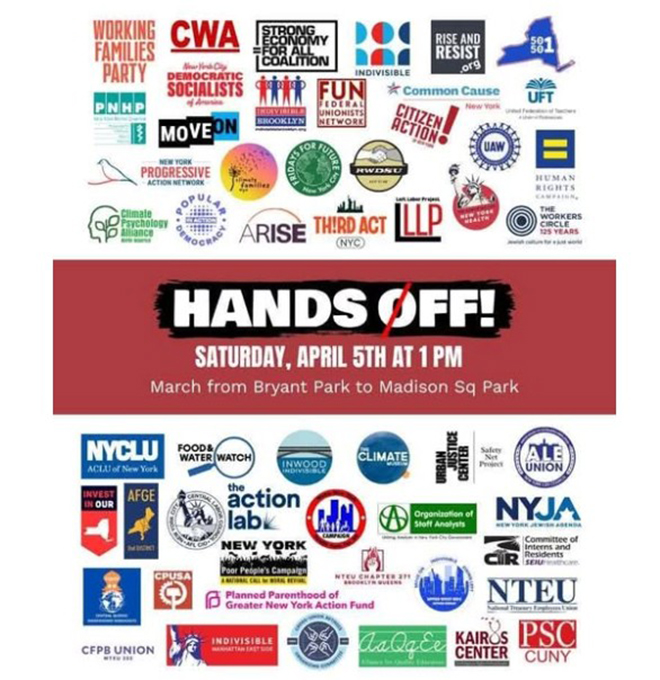
There were a number of union contingents that joined as we marched down Fifth – huge ones from the UFT (United Federation of Teachers) and NYSNA (NY State Nurses Association), the Laborers, CWA, SAG-AFTRA, Musicians. The Central Labor Council endorsed the march. Attached is a poster for the event, put out by the New York Hands Off Committee.
Bottom line people were there, some were able to assemble with their unions, with community groups, but people came out.
Since there were no permits, there were also no speakers.
Anyone could bring whatever signs they wanted.
Here is what one of my neighbors posted on Facebook, which is a damn good summary of the mood of the country:
“This felt to me much more deeply serious and intentional than the typical protest I’ve been to over the years. All two hours were pretty much consumed by gathering and marching–not the usual long-winded, repetitive speechifying (that so often feels like work to listen to) from leaders, would-be leaders, and politicians, that so often consume most of the time, but rather homemade signs, spontaneous chants, our steps, steps, steps, and more steps–and a sense of community with our fellow protestors all across the country.
This was not a one-time thing to make us feel good. This was a promise to keep it up, to do everything we can to save our country.”
Kurt Stand – “#42 was not a DEI hire”, April 5 at the Lincoln Memorial
We knew it would be a good crowd when we got to the Metro – long lines of people buying fare cards – which translated into people coming from outer suburbs to go downtown and attend the rally in D.C.
Between looking at handmade signs, watching people look at their phones to figure out which stop they should get off, it was clear that for many, if not most, going to protests is not something they ordinarily do.
Once we arrived at the Lincoln Memorial, we saw lines of animated people of all ages assembling talking, listening, looking all around (we hooked up with a group from DSA – young, militant, engaged – and happily too seeing old comrades and friends as in days of old). At the Memorial we would go from an open space to a crowded space, with the open space behind us filling up. With people behind us, to the side of us, all around us, it was impossible to estimate the crowd size. Numbers were perhaps not as high compared to some major demonstrations, but that was because this was not a national march; rather it drew from the “DMV” — Washington DC, suburban Maryland, Northern Virginia.
Thus the issues that resonated most were those that are impacting our communities. Federal workers, contractors, grantees were omnipresent as was evident by the signs – including many by scientists. Trans rights, public education, the needs of special needs kids was also a theme for they are the ones being hurt the most by the attempted destruction of the Department of Education. And anger at the attack on democracy has a particular meaning in D.C. as city residents lack (even in good times) basic rights that people in the 50 states take for granted. Speaking of democracy or the lack thereof, another focus was on migrant rights; the illegal deportation to El Salvador of Kilmar Armando Abrego Garcia, a sheet metal worker apprentice and unionist, is a case in point – we had attended a solidarity action at the federal courthouse in Greenbelt the day before. And after the rally on Saturday there was a march to ICE Headquarters that was met by many attending the adjacent Palestinian solidarity demonstration.
Best moment: a guy in a kilt and a bagpipe playing “Foggy Dew” – which fit nicely with the best poster we saw bit later: The answer to Germany 1933 is France 1789.
…
Tomorrow more reports from a few of the 1300 Hands Off! demonstrations around the country
Hands Off! Post 1
By The Editors
April 5 rallies against Trump/Musk nationwide!!
Jack Metzgar – Oak Park, Illinois
While there was a massive protest in Chicago’s Loop, there were impressive smaller ones in more than a dozen suburbs and small Illinois towns. The one in our leafy inner-ring suburb drew more than a thousand. I could not go for health reasons, but my 80-year-old wife reports a varied crowd from kids to seniors filling a public park in our downtown, angry but in high spirits.
Mike Johnston – Watsonville, CA
In Watsonville CA over a thousand people showed up at a rally in the main Plaza for a rally with speakers from the Labor Council, Barrios Unidos, the Day Labor Center and others. It closed with a rousing speech in English and Spanish from Dr. Faris Sabbah, the elected County Superintendent of Education, about growing up under an authoritarian regime in Iraq, reminding those present that all of what we have here was won through a revolution followed by years of struggle, not gifted, and emphasizing the need to unite behind all of the communities that are being attacked to fight back.
Josefa Simkin – Augusta, Maine
About 3,000 people showed up in Augusta, Maine, which has a population of 20,000. They heard from a Palestinian whose family came to the US in 1948 and who is now a US citizen who spoke and quoted history of the Resistance on the island of Mayorca, Spain when Italy’s fascist dictator tried to take over in the 1930’s. He said their motto was: ‘No Pasarán!’. And they won.
Alongside him was a representative from Jewish Voices for Peace, who emphasized that opposing Israel’s war on Palestinians was not anti-semitism. There were also state representatives, people representing trans rights, people representing the perspective of youth, people that were representing the Latino workforce and community that do a lot of labor for the main industries of blueberry picking, lobster industry. It was a chilly 37 degrees which did not dampen the enthusiasm of the crowd.
Ted Cocheau – Santa Cruz, California
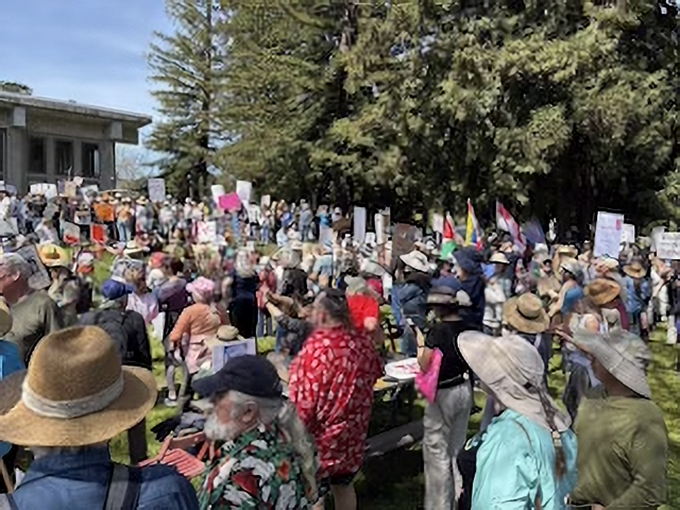
It was a beautiful warm spring day when as many as 5,000 people, most holding creatively derogatory hand-made signs, gathered in front of the Santa Cruz County courthouse at noon. Those who couldn’t fit on the crowded lawn lined up along Water and Ocean streets waving their signs and cheering at the cacophony of horns from passing cars. The crowd was energetic in a happy-mad sort of mood. Happy to be there with a very large crowd of like-minded citizens expressing their outrage, angry about Trump, and his destructive and heartless policies, while also getting after Elon Musk in equal measure. A series of speakers talked loudly into the PA system to be heard over the noisy crowd and the drum banging of none other than Crazy George. The MC got the crowd involved having the crowd loudly yell “Hands OFF! after each of his prompts, including, “What do we want Trump to do with our Social Security? Our Medicare? Our universities? Our libraries? Our scientific research, Our foreign aid? Our allies?…” Most of the crowd stayed for a few hours, happy to be amongst their friends and neighbors with a renewed sense of a moral community, then started drifting off to the parking lots still waving their signs as passing cars honked loudly and feeling happy they had an opportunity to express themselves. One perplexing observation was how few young people participated, especially being in such close proximity to the university, and this same observation was relayed from a friend attending her local rally in Santa Rosa.
Erica Terence – Orleans, California
About 25 Orleans residents assembled in tiny, rural Orleans, California, joining “Hands Off!” protests organized across America and the globe today. Protestors walked across the Orleans bridge to acoustic guitar folk songs, joined by a local dog and cow when they got to the other side!
Peter Olney – San Francisco, California
Civic Center Plaza in San Francisco was filled to overflowing today with demonstrators participating in the “Hands Off!” rally against Trump and Musk. “Hands Off!” is a national coalition resistance effort ofIndivisible, Move OnandThird Act among other forces. The most exciting aspect of this gathering was the creativity and multiplicity of signs and visual artifacts created by individual protestors. My friend Salvo Leonardi from Italy commented that you would not see such variety and creativity in signage in Italy. There would instead be large contingents with organizational – often union – banners and signs. I said that reflected somewhat the weakness of our resistance as we would benefit from tighter and more disciplined participation. I did not see a large and visible contingent for instance from labor although there were many unionists in the crowd. Nevertheless this was a big step!
The “Hands Off!” coalition advertised 11 separate rallies throughout California and many in other states. And “Hands Off!” is only one of many organizations powering the fight back. Keep our marching shoes on as these are only the opening salvos…!!
…
More from “Hands Off” demos around the country Tuesday, Wednesday, Thursday
Onigiri and Shohei Ohtani – A Japanese Sojourn – March 2025
By Peter Olney
This was my second trip to Japan. Christina Perez and I visited first in the fall of 2023 to see our son, Nelson, who lives in Tokyo. The whole month of March 2025 has been devoted to him and taking in more of the country than on our last visit. We went 400 miles north to Aomori, at the northern tip of Honshu, the main island of Japan, where Christina and I discovered the “onsen,” natural hot springs and the bathing facilities around them. I am accustomed to the cold plunge on Ocean Beach in San Francisco, but the onsen provide me with a cold pool and then a very hot bath. Very therapeutic for all the aches and pains of aging parts. I’ll be looking for some Bay Area onsen when I return. We visited the base of Mt. Fuji and returned again to Kyoto, the ancient capital of Japan, but now a city of 1.2 million. The cherry blossoms are starting to bloom, and life is good here at our house in Hino City, one of the many cities that make up the Tokyo metro area of 37 million.
Hino, population 190,000, is not glitzy, and rarely do we see non-Japanese folks in the area around the station where we reside. Hino is the home of Hino Motors, a truck-manufacturing subsidiary of Toyota. The Japanese auto industry and the business press are all abuzz about the stiff 25% tariffs that Trump is about to impose on Japanese autos entering the USA. Toyota is looking a bit foolish as they lavished praise on Trump in the run-up to the election and dutifully donated $1 million to his inauguration. They were motivated by the fact that Trump talked about stopping electric auto mandates. The giant Japanese automaker supported his position because they have bet their future on hybrids—gas and electric-powered vehicles. Trump’s hypocrisy and mendacity are on full display as he has lavished praise on South Korea’s Hyundai for building a $7.6 billion electric vehicle factory in Alabama and specifically exempting them from the auto import tariffs. Ass kissing and ego aggrandizement are the most effective tools for diplomacy with the Donald, and even that may not be enough depending on his latest whims! Tough talk of tariffs and economic nationalism belies the fact that the whole auto industry is international, sourcing parts and production everywhere. And management reflects this. The CEO of Nissan is Mexican, and the CEO of Hyundai is Spanish. Unions would be well advised to shed any domestic loyalties and unite with workers of the world.
Enough of this manufacturing talk. The big story when we arrived and remains so is #17 Shohei Ohtani and the Dodgers. Shohei is everywhere, and the two games between the Dodgers and the Chicago Cubs on March 18-19 were massive sellouts, with bleacher seats retailing up to $900. Both teams are loaded with several Japanese stars, and baseball is omnipresent in Japan. The high school playoffs are televised daily, and the quality is amazing. A high school pitcher throwing 95 MPH!
We had the good fortune to snag seats to see the Yomiuri Giants (the Yankees of Japan) play the Chiba Lotte Marines on March 23 in a preseason game in front of 42,000 at Tokyo Dome. We purposefully sat in the bleacher rooting section for the Giants. The fans are bedecked in Giants hats and shirts and stand and chant the whole home half of the inning when the Giants are up. Each starting player has a specific chant published in the paper program—thank God somewhere in the world there are programs. The ritual at the games is amazing, and we were warned that wearing the colors of the Chiba team in the Giants cheering section would be cause for expulsion!
Shohei is everywhere, advertising clothing, autos, and my favorite—onigiri! Onigiri are a Japanese dish consisting of small balls or triangles of rice stuffed with pickled or salted filling and wrapped in dried seaweed. My son introduced these to me on our first trip, and they have become our breakfast go-to food! We usually pick up our morning onigiri at Seven Eleven, Lawson’s, or Family Mart, three of Japan’s giant convenience store chains that feature fresh-made food daily. In fact, Seven I, the holding company for worldwide Seven Eleven, has rejected a $47 billion takeover offer from Canada’s Alimentation Couche-Tard Co., partly because of an issue of onigiri freshness. Onigiri inventory is turned over daily, and the company maintains a high standard of quality and freshness. Evidently, Couche-Tard doesn’t share that concern and is willing to cycle inventory over two days. This is somewhat emblematic of the riddle of Japanese society—robust capitalism coupled with certain societal values. Always good to remember that the CEO-to-worker pay ratio in Japan is 12-1, versus the US at 300-1. This is not principally driven by a powerful left labor movement redistributing income downward but by certain societal norms and customs.
If you are outraged about Trump and Musk and their daily attacks, being here in Japan is almost soothing. The big political scandal generating the most front-page ink is the fact that Prime Minister Shigeru Ishiba gifted $700 each to 15 members of his own ruling Liberal Democratic Party. This was his own money, but it is seen as an ethical violation that might bring his government down! The other thread I have followed is the debate over gender equality. Japan is the lowest ranking of the G-7 countries for gender equality. The debate in Japan has arisen over attempts to change the marriage surname law, which requires both spouses to use the same name, and that has usually meant choosing the male surname.
Healthcare, universal or not, is always a measure of societal progress. The Japanese Constitution expressly declares that citizens have a right to healthcare, and that it is the state’s responsibility to ensure that right can be realized. The government’s commitment to healthcare for all led to universal health coverage in 1961. Free access is guaranteed, and Japan was the first country in the world to establish a systematic long-term care insurance system. I had a bum knee in Japan. Years of football, jogging, and other exertions came home to roost with an aching right knee aggravated by carrying luggage. I went to see an orthopedic doctor at a clinic in Kichijoji. He is the brother-in-law of a friend of ours who we met in the US. He is a top-flight bone doctor who was the team physician for the Japanese Olympic Mogul ski team for the Salt Lake 2002 games!
The visit was fast and efficient. The doctor ordered x-rays immediately. He examined the rays and recommended the injection of hyaluronic acid for joint lubrication. I had never heard of this treatment, but I went for it. Days later, and with the assistance of hot baths, the knee is doing much better. But what was more impressive was how my pocketbook was doing after the visit. I am a foreigner without Japanese national insurance, and I paid $80 for the whole visit. There is civilization beyond the borders of the highly privatized, rapacious healthcare system of the US. No Luigi Mangione here!
On my first visit in 2023, I did a training on internal union organizing for Zenroren, the second-largest national trade union federation with over 700,000 members in their affiliated unions. At the invitation of Assistant National Secretary for External Affairs, Keisuke Fuse, I spoke this time on Labor under Trump or Labor Building Power and Overcoming Trump. We did the talk at the headquarters of Zenkyo, the All Japan Teachers and Staff Union, a Zenroren affiliate. There was a national Zoom hookup. The meeting was ably chaired by Zenroren National Secretary Kurosawa.
My talk was on March 21; a few days after the wage settlements under “Shunto” were announced. Shunto is the Japanese term usually translated as “spring wage offensive.” It was first carried out in 1954 in response to the company-by-company or “enterprise” unionism that made unions reluctant to strike one firm for fear that other companies would snap up market share. Therefore, the unions agreed on one date to potentially strike if their demands were not met. The Shunto has evolved into a largely ritualistic push without the real threat of national strikes. I went to a small but spirited Zenroren rally in front of NTT (Japanese Tel and Tel). Soon after, I was astounded to read in the newspaper that Toyota, for instance, agreed to meet the union’s full wage requests, and some major corporations gave raises higher than demanded by the unions. A seemingly bizarre twist, although I remember when certain grocery employers in the USA gave higher wages than the United Food and Commercial Workers (UFCW) contract called for in order to attract personnel in a tight labor market.
I have spent a lot of time in Italy over the last 54 years and Christina and I like to settle into our neighborhood in San Frediano, Florence for a few months each year. Japan seems to be pretty intrigued by Italy also. There are tons of Italian restaurants with mediocre food, but besides the embassy the Italians have a large Cultural Center opposite the gardens of the Imperial Palace. Our friend Giacomo Benvenuti of Florence spent 10 days with us at the tail end of our month in Tokyo. He took us to the Ghibli Museum which is dedicated to the work of Studio Ghibli, the producer of many animated films that are renowned around the world: My Neighbor Tortoro and Princes Mononoke and The Boy and the Heron. Ghibli is an Italian word meaning a hot dust, bearing wind from the North African desert. It is derived from the Libyan Arabic word “gibli” meaning south wind. Studio Ghibli’s legendary director Hayao Miyazaki adopted the name for his studio because he felt the need for inspiration from a hot wind. The Museum is an experience unlike any other museum that I have visited and Miyazaki is quite an amazing figure, very prolific and very much involved in the peace movement. He has won 2 Academy Awards for Best Animated Feature films and in 2001 he boycotted the Academy Awards because in his words: “The reason I wasn’t here for the Academy Award is because I didn’t want to visit a country that was bombing Iraq.” Giacomo further observed that, “Even if Japan ranks low in gender equality, their animated films portrayed strong, independent heroines (already from the 80s). They were able to combine this sort of new and controversial idea with a narrative exalting at the same time the old pre-capitalist traditional culture, particularly the Shinto deep search for equilibrium.”
There is lots more to reflect on about Japanese customs and politics, and I was hoping for a final meet-up with Attorney Suga Shunjii, who is spearheading a Japanese legal assault on the phony Amazon Independent Contractor (IC) model—winning Workers’ Compensation claims for injured IC drivers at Amazon in Japan. Speaking of phony ICs, Uber is not legal in Japan, but you can use the very efficient and reliable Uber app to request taxis. And we did!
So, while we ate well and enjoyed our time with our son and the onsen baths, I couldn’t help myself—it was a busman’s holiday after all!!!
…
A Lesson From Argentina’s Dirty War for Today
By Jay Schaffner
When my father immigrated to the United States when he was fourteen, his older sister was not allowed passage as part of the family visa, since in the year in that took to issue, she had gotten married. Anna and her husband Efraim were in a quandary. The year was 1921. The family were refugees from the Ukraine, which had been part of the old Russian empire. Efraim had been a conscript in the Czar’s army, from which he deserted, and now was wanted by the White Russians. He was then in the Red Army and in the Ukraine in 1921, he did not think there was any hope for the Red Army, so he also deserted.
Anna and Efraim boarded a ship in London for Buenos Aires, Argentina. My father would not see his sister for 54 years. During the period of Argentina’s Dirty War in the 1970s, when Argentina suffered under a murderous fascist dictatorship, my father and uncle convinced Anna to come to the United States. The first time they saw each other in 54 years. (Efraim had died a few years before.) They had written one another, about the weather, about their work, their families, nothing else, all in Yiddish. My father living under McCarthyism, fearing deportation because he was a naturalized citizen; Anna living under Peron and Peronism. They never expressed their views of the government.
Surprise, surprise, when they met after 54 years, they found that they were both members of the Communist Party in their respective countries. Anna was here two years, then she decided she was going back. She was confident that she would be OK. She lived another few years – the junta never came for her.
Years later Judith and I were in Buenos Aires. We went to Memorial Park, the monument dedicated to the 30,000 who were perished by the junta during the Dirty War. There were seven panels, for each of the seven years, organized alphabetically, with people’s ages. Nearly everyone was in their 20s, early 30s or a teenager. Anna was right, they left people her age alone.
My message – Those of us boomers – We have a vital role to play in organizing and fighting the MAGites march to fascism.
April 5, 2025 – Hands Off! – Remove, Reverse, Reclaim!
Remove Corrupt Politicians from Office
Reverse the Damage
Reclaim Our Democracy
One thousand local actions in every state, in every state capital, in large cities, in small cities and towns, organized by hundreds of local organizations and private citizens. Called to action by Indivisible, 50501 Movement and the Women’s March, and endorsed by more than 150 national and regional organizations.
Organizations as diverse as the AFT, NEA, PSC CUNY, SEIU, CWA, UAW, Greenpeace, Roots Action, Color of Change, Stand Up for Science, Consumer Federation of America, League of Women Voters answered the call; as did MoveOn, Working Families Party, Our Revolution, and Third Act.
For more information and to register for a local event, click here.
…
How do we defeat the fascists? My Best Guess
By Fred Glass
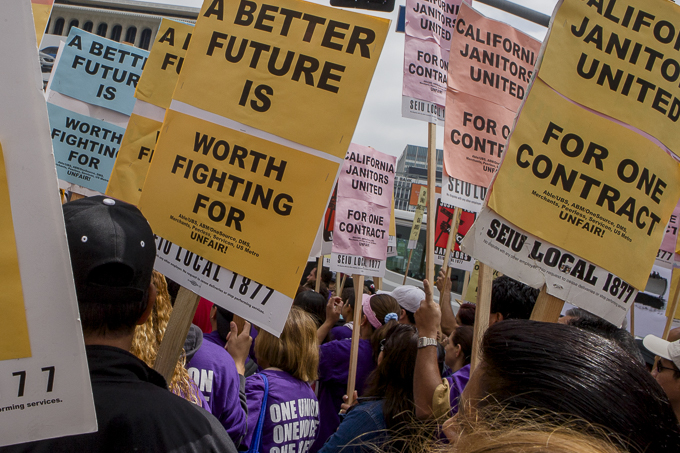
I’m sure you’ve had the same conversation by now. A friend, family member or near-stranger calls and says, “Talk me down. I’m freaking out.”
I fielded two of these recently. The first caller, an old friend and comrade, is not a newbie. After a couple decades on the left, during which she was an activist in a teachers’ union and leader in various union campaigns, she upped her game, getting herself successively elected as a school board member, City Council member and finally County Superintendent of Public Instruction, overseeing seventeen school districts. She served two terms, staying faithful to the progressive ideals she started with.
After retiring she joined DSA and continued to stay active in electoral politics in a support role. In short, she is not naïve or easily rattled. But on this occasion, she was feeling completely unnerved and overwhelmed. Why? By paying too much attention to the news, chock full of horrifying stories about Trump, Musk, Vance, and the other elected and unelected fascists in their ugly campaign to destroy the helping powers of government and make life for the multiracial working class as miserable as possible.
She called because she was looking for human connection with a comrade whom she hoped could point to some rays of light amid the darkness. I told her that many people are resisting the fascist tide in many ways—in the courts, in all levels of government, and in the streets. New coalitions are being formed, and old ones resurrected. I mentioned the popup demonstration staged by FUN (the new federal workers network California Red reported on last issue) that I had attended.
I told her the mainstream media is certainly not helping here. Its underreporting of the resistance is spotty, often politically unsophisticated, and fearful of taking on Trump. If you pay too much attention to it, it will freak you out and/or wear you down quickly—part of the goal of a fascist regime. She got off the call telling me that she felt a bit better, and promised she would more carefully titrate her media consumption going forward.
In the middle of the call I saw my brother was trying to reach me, so I called him back—and found myself essentially returned to the same conversation, complicated by where he lives, a small conservative rural town. He said analogies with history (Germany 1933) were making him extremely nervous.
“… this part of the strategy requires state and local work around election protection, as well as a candidate selection process”
In both conversations (and others like them) I gave two pieces of advice: watch your political media intake carefully, and find a group of like-minded people with a common resistance perspective and shared activity to join with—being careful to take on only the amount of work that won’t burn you out over the long term. It also helps to have a best guess big picture to work with.
Best guess: Three lines of defense
I—and I’m not the only one—see three lines of defense and broad areas of activity between now and the 2026 elections (if we are still having them by then). The first, a focus on the courts, leaves out most of us for strategy discussion and direct participation, as legal action mostly requires being a lawyer. But we can certainly participate in support campaigns, including publicity, education and organizing. Since the highest court in the land is in the hands of Trump appointees, this first line of defense may only get us so far, with its main utility buying time. It may ultimately be more effective for education of the public than actual legal redress—especially if the fascists choose to ignore and sideline the courts. For what it’s worth we note that of the eighty suits filed against Trump he has won 12 and lost 22.
The second front is electoral—organize to overturn the thin majorities of Republicans (now a fully fascist party) in the House and Senate. It is critical that at least one house of Congress goes to the Democrats in order to block the worst actions of the trifecta held by Trump et. al. At this point there is no guarantee that there will be elections in 2026, or if there are, that they will be conducted fairly. So this part of the strategy requires state and local work around election protection, as well as a candidate selection process that makes certain no Trojan horses like Manchin or Sinema are among the Democrats running, and replacement of weak straws like Schumer among the current leadership. Then, of course, there’s actually electing candidates in 2026.
“… the final line of defense before full on dictatorship will be mass action. What might that look like?”
Alongside these two frontline areas it will be crucial to construct robust non-violent direct action (NVDA) wings of our movement. Sit-ins, marches, occupations, other forms of civil disobedience and face to face confrontations against the people moving the country to dictatorship will gain news coverage and, with successes, provide information and courage for the long term. Such activities will bring in new recruits. (They will also require savvy and well-prepared security. Depending on how things unfold the MAGA forces might well unleash their violent rabble on peaceful demonstrations.)
There is at best a two-year shelf life on these two lines of defense, which is why development of street support for them is so critical; the latter will likely become the key component of what follows. If lines one and two crumble the final line of defense before full on dictatorship will be mass action. What might that look like?
Here is where unions come into the center of the picture, and we must begin preparing now if there is to be any chance of success. Maximum impact on this far right government and oligarchy (which since January have become synonymous) will be earned when masses of workers refuse to work. The more that the consent of we the governed is withdrawn from the abuse we are suffering, the more leverage we will have.
Forward toward the…
I have never been one of those people who think it’s a good idea to call for a general strike to deal with a problem, even if the problem—say, the United States going to war under false pretenses—would deserve to be met with that solution. Why not? Because there are sound reasons why we’ve only seen around fifteen (depending on how you define them) citywide general strikes in nearly two hundred and fifty years of American history, and none since 1946. We’ve had exactly one national general strike, in 1886, which after achieving only limited success toward its goal of an eight-hour workday, brought on the first Red Scare.
Called by the young American Federation of Labor (AFL) and supported by large sections of the Knights of Labor on May 1, 1886, the strike was honored by some three hundred thousand workers (in a non-agricultural workforce of around twelve million). It eventuated over a period of years the establishment of International Workers Day on May 1 in nearly one hundred countries around the world, but not here, the country in which the events occurred that inspired the holiday. In the wake of that setback, the eight-hour day movement had to wait nearly half a century before it became the law of the land.
This historical record might not encourage hope for a general strike’s success today. Neither does the current state of organized labor, which is weaker in terms of workforce density than it has been in a century, and contrary to what is required for a general strike, fractured along several fault lines.
Don’t call: organize
But recent developments mean the political landscape is shifting. Many strikes erupted in 2022, the most important of which was the autoworkers’ victory over the Big 3. In its wake the UAW’s president Shawn Fain issued a challenge to the rest of the labor movement: line up your contract expiration dates for May 1, 2028 and prepare to act the way a united working class should act. No leader of a major national union has talked—concretely—like this for decades.
Although we have seen no citywide general strikes since 1946, in 2018 the “red state revolt” of education workers featured anti-austerity walkouts that in their scale were essentially general strikes of public education. Currently in California a number of major urban teacher unions have been meeting and planning to bring these ideas together: a common contract expiration date and united action when the contracts expire.
When Trump’s Department of Homeland Security announced earlier this month that it was cancelling TSA workers’ collective bargaining rights, Sara Nelson, head of the Association of Flight Attendants, responded that workers have “very few options but to join together to organize for a general strike”.
The wording is precise: not a call, abstractly, for a general strike, but to organize for one. This was the beauty of Fain’s call. Embedded in how he issued the call was how to make it happen. Even so, it will take a massive effort to pull it off. The plan was presented before Trump’s election with a three-and-a-half-year timeline—appropriate for scaling up this way. But given the speed at which the fascists are breaking government and completing their coup, we will probably need to move up the schedule. Is that possible?
“… unity of the forces of resistance to fascism and oligarchy is created by coalition building and …”
An extraordinary event, a general strike takes a rare combination of circumstances to bring it about, let alone win. Four preconditions are required: widespread anger among working people; a high degree of cooperation in a strong enough labor movement; union leaders confident enough in their level of organization that they are willing to stick their necks out and call for it to happen; and a spark or symbolic incident that crystallizes people’s willingness to act.
In light of the relatively small size of the labor movement today, coalition with other progressive organizations is crucial: finding common cause with community organizations representing working class, poor and otherwise marginalized constituencies, with international solidarity and anti-war movements, with NGOs of all types, will be important.
It is likely that building block actions will contribute along the way—sectoral strikes, demonstrations and occupations, with (best outcome) growing solidarity and tactical sophistication developing through successes and failures. Labor leaders will need to be convinced through this process that militancy is a practical matter. This will no doubt not be a linear process; more like a chaotic one, the lessons of which need to be considered on the fly, tested and retested. A general strike—the ultimate weapon of the working class—will result from intent, experience, reflection and a bit of luck.
Attitude counts
That’s as far as my best guess can take us. I’ll close by emphasizing that unity of the forces of resistance to fascism and oligarchy is created by coalition building and enabled by an attitude not always present in the culture of the left. We are far too prone to being alert to openings to argue, to disagree, split, stay in silos, and allow purity of principle to keep us divided. This is especially the case within organized labor. Seeking differences is relatively easy. We are less used to (and less good at) seeking openings to find our common interests and purpose and then acting together as one. But without that attitude of openness and unity-seeking, coalition building becomes far more difficult.
Fighting fascism is not a time and place for purity, single-issue politics or doing things the way we’ve always done them. It’s a time to set aside the narrow lens for a broad one. By all means continue to work on your social justice cause, the one that you have passionately cared about and pursued for years or decades, whatever that may be. But don’t let that divert you from the task of standing with others in the alliances that are now forming to build the strength necessary to defeat Trump, Musk and their fascist assault. We’re in this together or we’re not going to make it.
…
